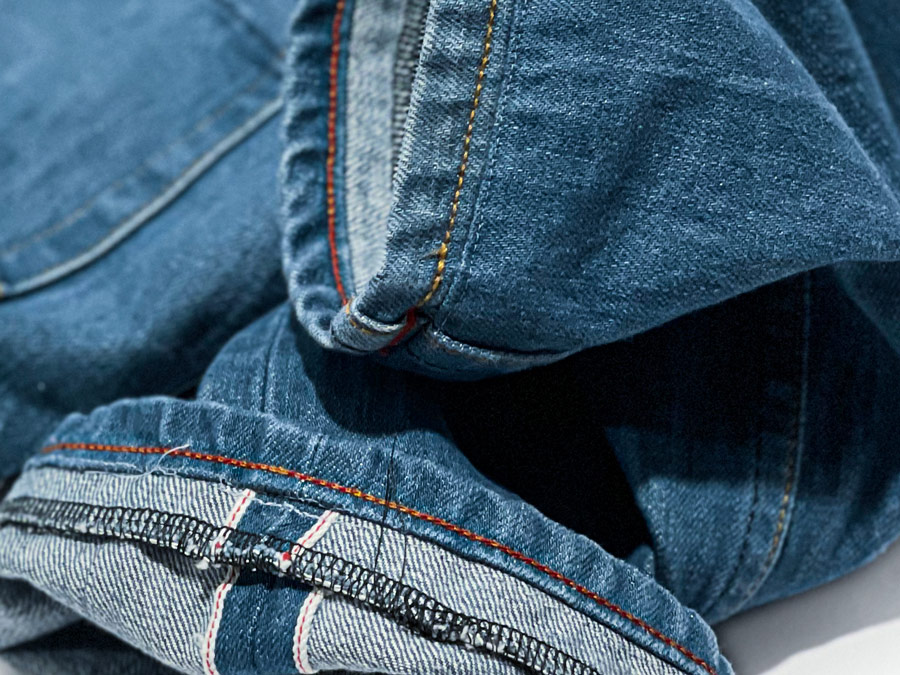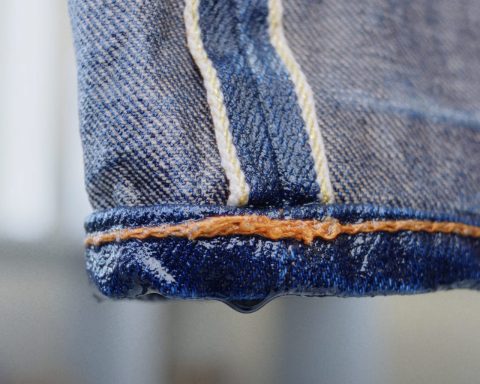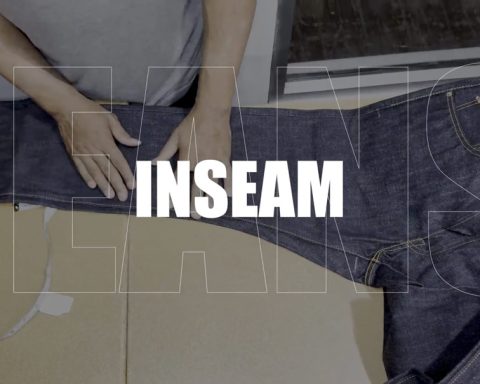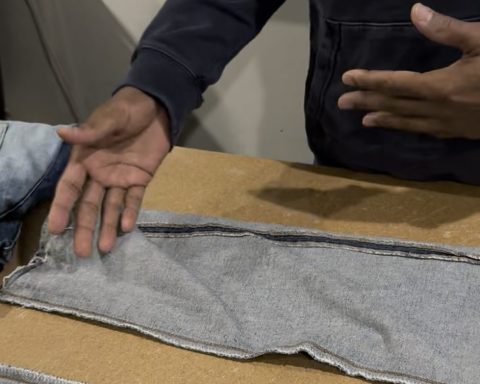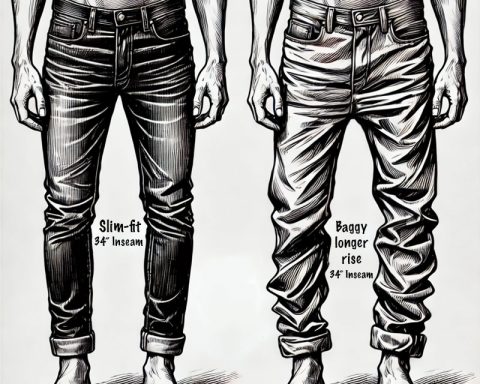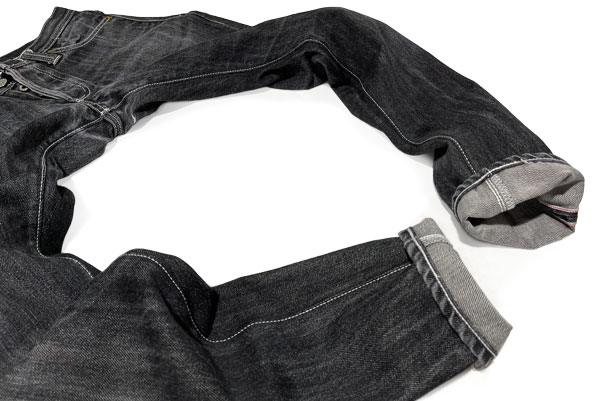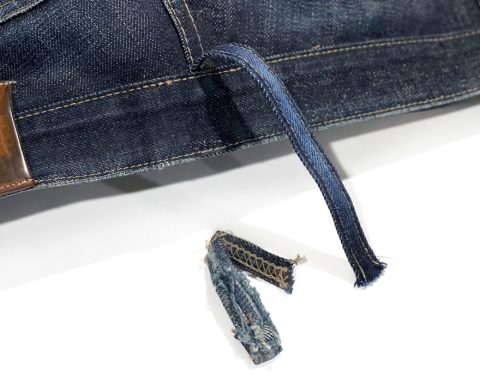An original hem also called a European hem, or euro hem is an alteration method where the goal is to shorten jeans and pants without losing the original manufactured hem. This alteration technique is a perceived value on garments with pre-washed or aged hem edges to those who do not want to lose the look.
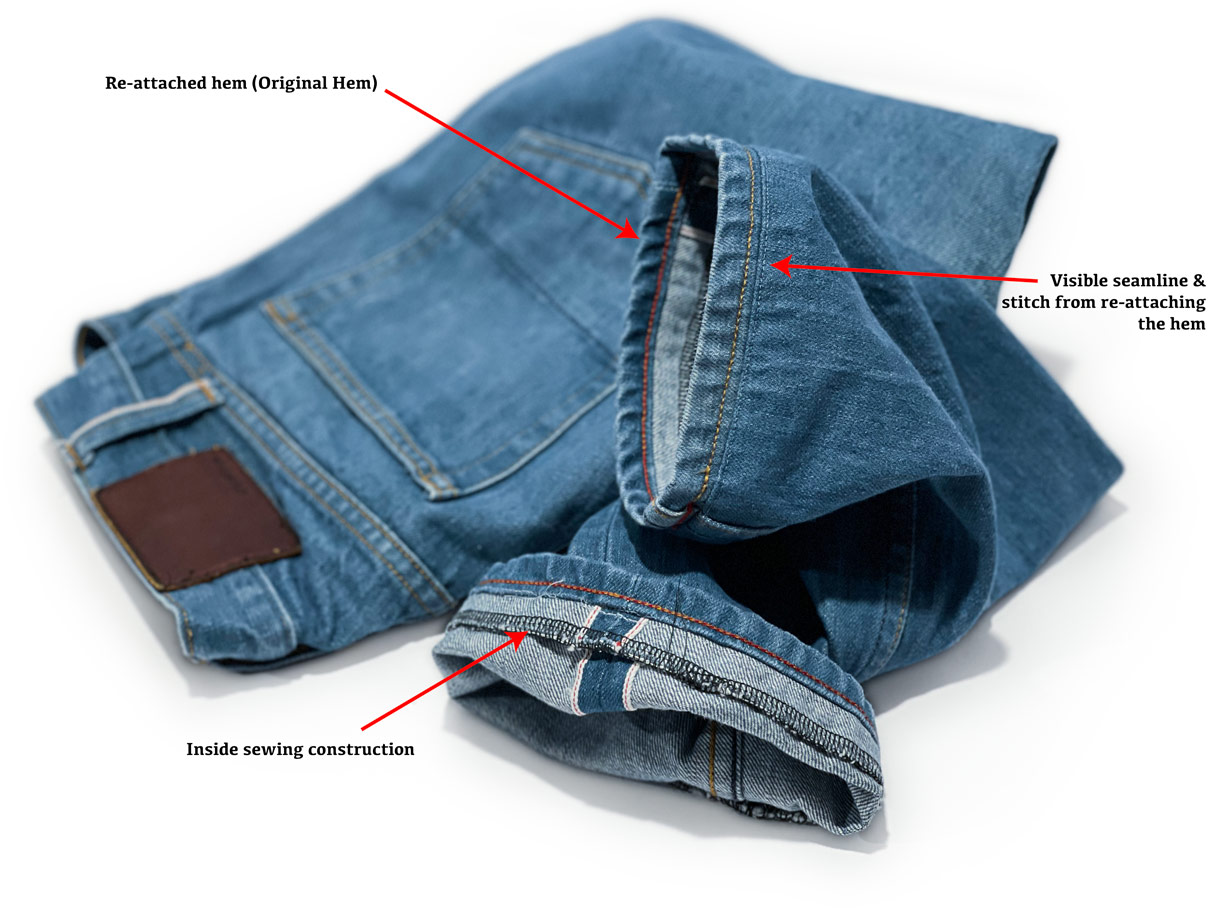
This method of hemming is preferred among sewers with home and common-duty industrial machines. It allows them to dodge sewing through multiple layers of denim fabric required in traditional jeans hemming. Besides preserving tatter hem edges, some techniques preserve the manufacturer’s stitching above the hem, which is too thick for home machines, and usually not stocked at most dressmakers and tailoring shops.
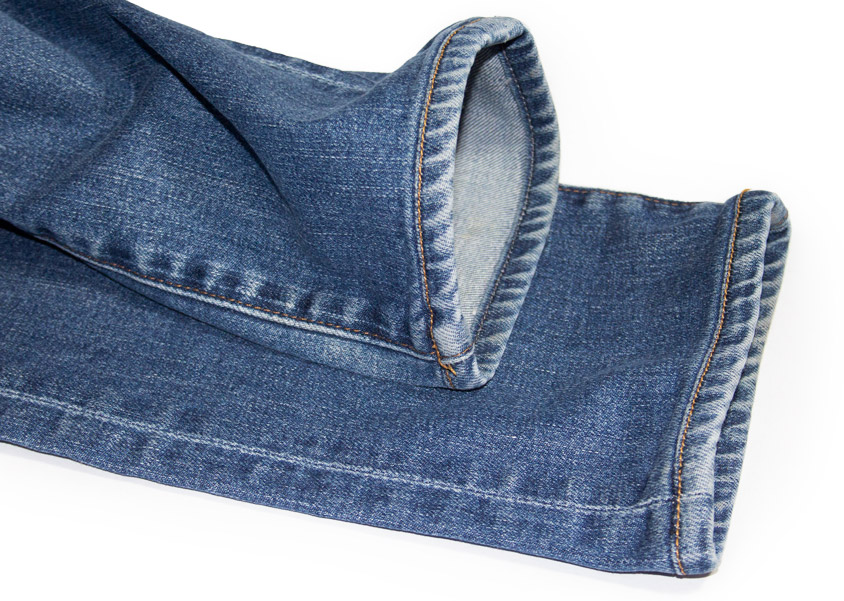
The alteration method above has a clean inside construction but its construction style causes the hem to be stiff and ring-shaped. The customer who sent this pair in removal and re-hemming complained it was annoying to wear.
Denim enthusiasts and those generally knowledgable about jeans avoid original hem alterations. It is an alteration procedure typically advocated by DIY diehards and non-denim experts because it is generally easier for their equipment to handle. The tailor’s selling point of the process is the preservation of the store-bought hem. Void in the conversation is the annoying inside bulk around the ankles, goofy seamline, or stiff ring-like shape of the cleaner sewn version of the alteration – and the fact that the aged look of the hem will naturally come back through frequent washing and/or wear.
Denim jeans and like-constructed pants are predominantly sewn with chain stitching at the hem and heavy threads that can withstand harsh washing, not typical in other garments. However, even denim lovers more knowledgeable than the average mom about jeans and workwear can get talked into an original hem alteration. Either that or don’t ask the right questions in choosing a hemming service. Have a look at a few examples of jeans and pants sent to us in need of rescuing.
Iron Heart fans should be warned, that the photo below could be extremely upsetting.
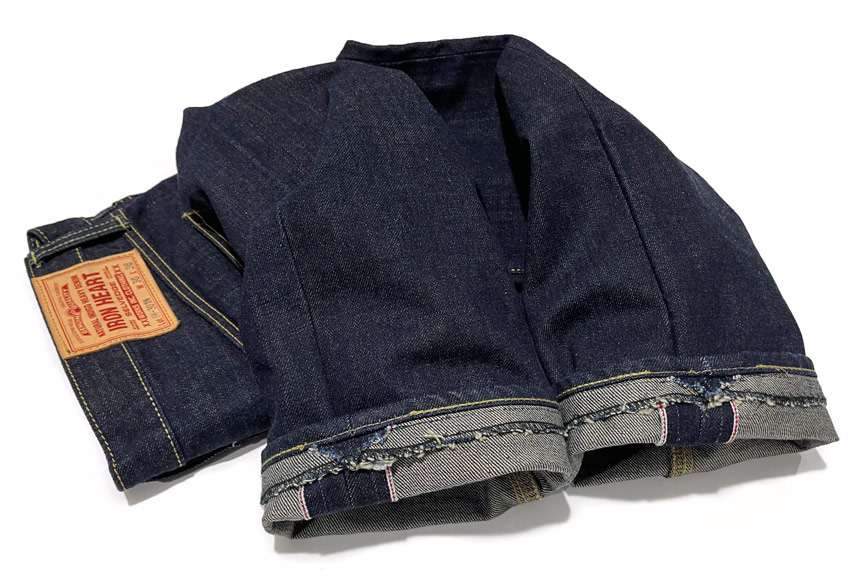
This is a prime example of bad tailoring. These rather expensive and high-quality jeans were tapered from the outseams, destroying the selvedge. Not to go far enough, the tailor topped them top off with an original hem alteration. Here there is no reason to save an aged-looking hem edge. The obvious reason for using this hemming technique is the lack of equipment able to sew through the heavy denim typically found in Iron Hearts jeans.

